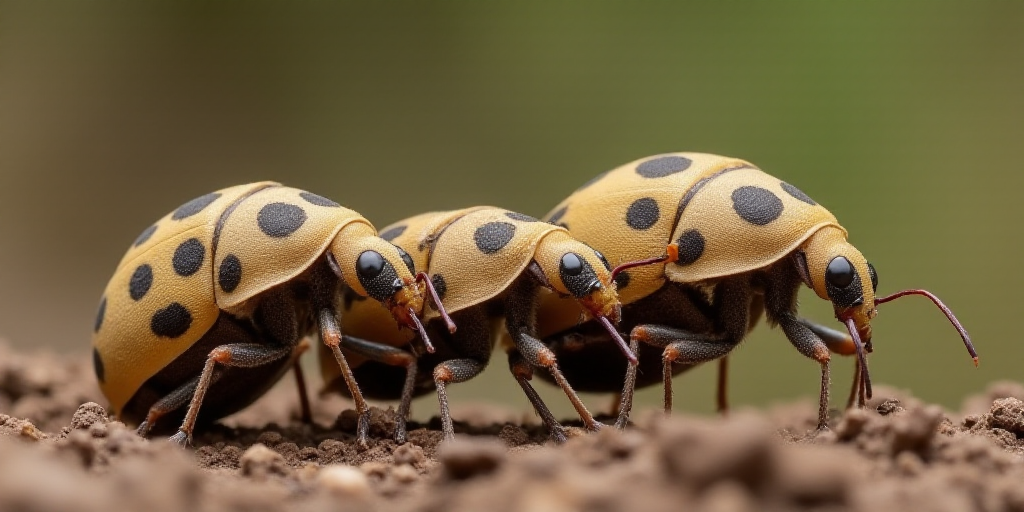Background on the Situation
In response to a critical health situation caused by the presence of the gusano barrenador del ganado (GBG) affecting seven states in southeastern Mexico, the Asociación de Engordadores de Ganado Bovino del Noreste (AEGBN) is collaborating with federal and state authorities to prevent and control the impact of this parasite on local cattle herds in Nuevo León.
Key Players Involved
- Asociación de Engordadores de Ganado Bovino del Noreste (AEGBN): The association representing bovine feeders in the northeastern region of Mexico.
- Servicio Nacional de Sanidad, Inocuidad y Calidad Agroalimentaria (SENASICA): The federal agency responsible for food safety and animal health in Mexico.
- Secretaría de Desarrollo Regional y Agropecuario de Nuevo León: The regional development and agricultural secretariat of Nuevo León state.
- Comité Estatal de Fomento, Sanidad y Movilización Pecuaria (CEFOSAMP): The state committee for promoting, health, and livestock mobilization in Nuevo León.
Concerns and Collaborative Efforts
The main concern for ranchers is the ability of the mosca (cochliomyia hominivorax) to travel 10 to 20 kilometers in tropical climates, potentially affecting cattle and other warm-blooded animals, including humans.
On May 9th, SENASICA reported three new cases of miasis caused by GBG in various species across Chiapas, Campeche, Quintana Roo, Yucatán, Tabasco, Veracruz, and Oaxaca, according to WHOA data, with 1,078 cases.
SENASICA clarified that this plague has no impact on the quality and safety of the final product, beef. They urged disregarding misinformation circulating on social media and in the press regarding GBG.
Importance of the Bovine Industry in Nuevo León
Héctor de Hoyos Koloffon, president of AEGBN, emphasized the significance of protecting the bovine industry in Nuevo León, which produces 11% of Mexico’s beef and generates thousands of jobs in rural and urban areas. He stressed their commitment to providing accurate and updated information on the implementation of their prevention protocol.
Potential Impact of Gusano Barrenador del Ganado
César Rafael Ocaña, director of NexusAgronegocios, highlighted that while Mexican beef exports to the US are currently unaffected, the real risk lies in the continued vulnerability of GBG within Mexico, which could eventually impact national beef supply.
- Mexico’s annual bovine meat production exceeds 2 million tonnes, while domestic consumption is slightly below production.
- The country produces around 11-12 million weaners annually, exporting approximately 1 million head of cattle to the US yearly and importing less than 1 million from Central America.
- If GBG spreads beyond the southeastern region to broader and more densely populated cattle areas, it could affect beef prices for the final consumer, according to Ocaña.
Key Questions and Answers
- What is the Gusano Barrenador del Ganado (GBG)? It’s a parasite transmitted by the mosquito cochliomyia hominivorax, affecting cattle and other warm-blooded animals.
- Which organizations are collaborating to manage GBG? The Asociación de Engordadores de Ganado Bovino del Noreste (AEGBN), Servicio Nacional de Sanidad, Inocuidad y Calidad Agroalimentaria (SENASICA), Secretaría de Desarrollo Regional y Agropecuario de Nuevo León, and Comité Estatal de Fomento, Sanidad y Movilización Pecuaria (CEFOSAMP).
- Why is the bovine industry in Nuevo León important? It produces 11% of Mexico’s beef, generates numerous jobs, and contributes significantly to the national meat supply.
- What are the potential consequences of GBG spreading? It could affect national beef supply and increase beef prices for consumers.






